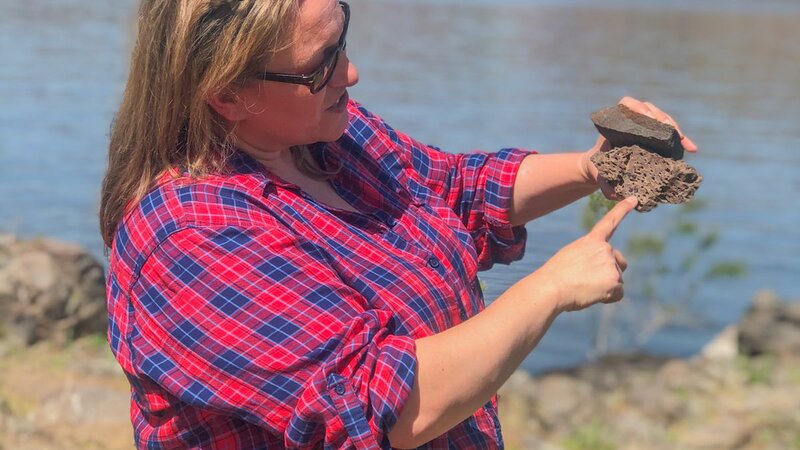On the banks of the Columbia River, tall columns of rock poke out from the cliffs.
“So you see all of these black rocks that are on either side of us, on either side of the river? Those are basalts. And they’re volcanic rocks that erupted about 15.5 million years ago,” said Casie Davidson, a geologist with Pacific Northwest National Laboratory.
As the lava cooled, she said, gasses got trapped in the porous rocks. That created cavities in the rocks. Another solid layer of rock later cooled on top of the porous one. Layers piled on top of layers.
Today, Davidson and her colleagues say those cavities can be used to trap carbon dioxide — in a process called carbon sequestration.
“Can you imagine what it looked like here with these volcanoes erupting and this massive amount of lava flowing through here? Can you imagine what the climate was like? And it was probably terrible to breathe,” said Todd Schaef, a geologist at the lab. “There's no telling how much crap was in the air. And now we're asking the same formation to help us.”
Carbon sequestration isn’t new. Places in the Midwest and Gulf Coast already store carbon underground like this in sandstone rocks.
But, basalt is different. When you put CO2 in the spaces between the rock, it turns into minerals.



 Climate Change
Climate Change Science
Science Native Americans
Native Americans


